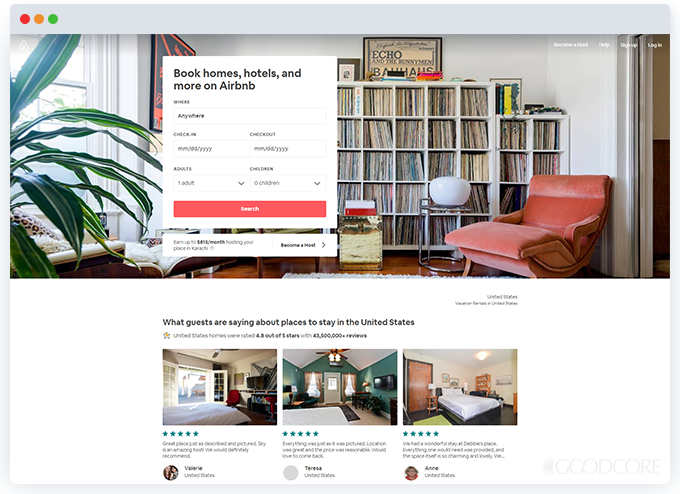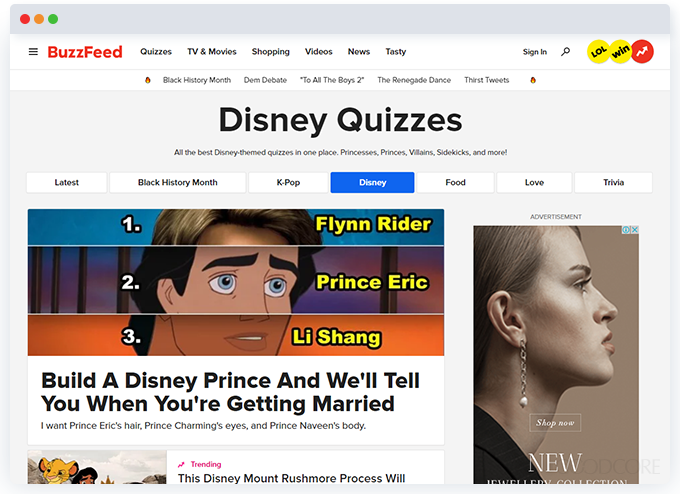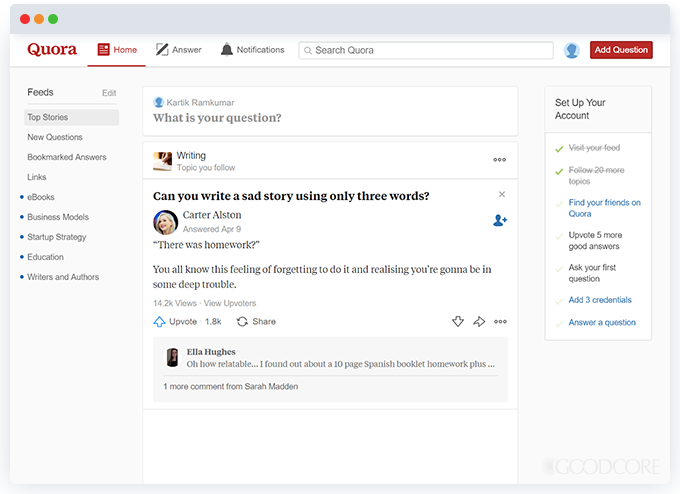The first-ever website that was developed and launched was a simple single-page web page for the European Organization for Nuclear Research (CERN) that went live in 1991. Today, after 29 years, we have over 1.2 billion websites online on the World Wide Web. Statistics show* that 380 new websites are created every minute. That’s over six websites every single second! It is not only the total number of websites which has grown exponentially but also the types of websites. Since 1991, we have come a long way from single-page websites with static text-based content to a wide variety of website types today that come in all shapes and sizes – and that is the topic for this article.
As a web development company, the client often tells us ‘I need a website’ and we always ask ‘What type of website?’ Today, we categorise the different kinds of websites based on their technical composition and the purpose they are intended for. Here’s what we are going to cover in this article:
- 5 broad website categories based on their technical nature
- 12 popular types of websites
- The distinct features of the different types of websites with examples
5 Broad Categories of Websites
The technical composition of a website shows what goes into developing and maintaining the website. When it comes to the technical nature of all the different types of websites, they can be based on the types of web content, types of web designs, their capabilities, and the development languages and tools required to develop and maintain them.
A website usually falls under one of the following categories based on its technical nature.
1. Static Brochure Websites:
As the name suggests, static websites are simple and non-editable websites. These are also referred to as non-editable brochure websites which you can think of as digital versions of a physical printed brochure. For businesses, a static brochure website only serves the purpose of information hosting. It catalogues and provides information about products and services. It can promote the business but it does not serve the purpose of e-commerce.
Typically, static brochure websites are comparatively cheaper to build and maintain. They are often suitable for small businesses starting out on the web.
2. Content-Managed Brochure Websites:
Unlike static brochure websites, content-managed brochure websites are editable. They require a content management system (CMS) for this purpose. On content-managed brochure websites, the owner can use a CMS to easily create, edit, and add content on the website.
3. Editable Dynamic Websites (With User Engagement):
These are the types of sites that are self-managed and editable. Similar to content-managed brochure websites, editable dynamic websites also use a content management system to edit and manage the website. Additionally, such websites not only display information about products and services but also allows more user engagement (i.e. with user login areas etc.)
4. E-commerce Websites:
E-commerce websites, as the name suggests, are the types of websites where a business can directly sell products and services to customers. For this purpose, they require integration with payment gateways, such as PayPal, for e-payments.
E-commerce websites are more complex software development than simple brochure websites; therefore, they are often expensive to build and maintain.
5. Progressive Web Applications (PWA):
Progressive web applications are complete website solutions that do much more than just hosting information about your business. These are websites based on web applications that offer a comprehensive set of functionalities. Through APIs, they can integrate and engage with a variety of other web platforms and services.
Now that we have covered the technical categories of websites, we know that the billions of websites on the web right now fall under one of these broad categories. But let’s take a closer look at the types of websites based on their intended purpose. In the following section, we will discuss 2023’s top types of websites, their purpose, and examples. So read on!
12 Most Popular Types of Websites for 2023
Following are some of the most popular types of websites. You must have used a website from each website category without paying attention to how they differ from each other in terms of their functionality.
1. Homepages
Homepages are websites that are referred to as the ‘face of a brand’. They are the main base of your site and serve a number of crucial purposes. Homepages are well-planned, user-friendly web pages that effectively communicate the information about what a brand is and what it offers to the target audience. They also help site visitors navigate the website and contain specific CTAs (calls to action) for lead conversion.
From a design perspective, homepages are built to reflect brand aesthetics. They are also always optimized for different kinds of screen sizes and devices. Airbnb’s homepage is a great example – it conveys the main information and aesthetics of the brand.

2. Business Websites
A business website is simply a web platform that represents a specific business organisation. Most businesses today have a business website to maintain their online presence and give them a competitive edge. A business might build a website to directly sell their products or services (e-commerce) or to simply host information about the business (brochure website). Either way, a business website is one of the most popular types of websites.
As an example of a business website, let’s look at the website for our own business. GoodCore’s website shows what our business is about. It presents information about our company, all the services we offer, our clients, and undertaken projects. Basically, it tells everything about the business. It also allows user interaction through features like a live chatbot for assistance and a contact form.

3. Blogs
Blogs are content-based websites usually owned and managed by an individual or a small group, and frequently updated with new content. Articles, photos, and videos are regularly posted on the website that the users can view and engage with. When it comes to the type of content, blogs can be about any topic under the sun. Some blog websites post content related to a specific niche. For instance, TechCrunch is a blogging platform that only publishes content related to technology. Other blogging platforms like Mashable have blogs from various categories (sports, tech, entertainment, culture, science etc.) on the same website.

Blog websites are extremely common for businesses now. Most major brands and businesses now have their own blog websites that they regularly update with their brand-specific content to promote their business and reach a large number of current and potential customers.
4. E-commerce Marketplaces
Websites that facilitate online shopping are known as e-commerce marketplaces. They are the types of platforms where people can go and purchase or sell products online. These platforms feature and sell a variety of goods that you can browse through and buy online. Some important features and functionalities of an e-commerce website are:
- Product categorisation
- Search and filtration
- Item availability
- Integration with payment gateways
- Integration with shipping methods
Commonly, e-commerce websites are built on e-commerce platforms like Shopify or Weebly, where the sellers can sign up by paying a monthly fee and use the available templates to build their own e-commerce websites. However, businesses with unique requirements often find these e-commerce platforms restrictive and choose to have a custom e-commerce website developed instead.
I am sure you must have used an e-commerce marketplace for online shopping at least once in your life. Some of the most well-known e-commerce websites are Amazon, eBay, Etsy, Alibaba, and ASOS.

5. Landing Pages
A landing page is a type of web page that serves the purpose of marketing and advertising the business. The purpose of landing pages is to lead users to perform a certain action, and the whole web page is designed around that call-to-action. Unlike homepages, landing pages do not provide extensive information about the business – they only show limited information and content that is needed to push users to convert. Here’s an example of Snapchat’s landing page that is centred around the CTA persuading users to enter their phone number to receive a download link on their phone.

6. Web Portals
Web portals are websites where users can log into the internal system of a business, institution, or organization. They are important types of website platforms that are used to perform crucial functions like customer service, vendor management, information management, complaint management, internal communication etc. Using personalised login credentials, users can log in to access information. Here’s an example of a web portal website used by Stanford University. AXESS is a portal for students and professors at Stanford University where information regarding courses, programs, class schedule, academic performance, enrolment, and personal records can be accessed.

Web portals are more technologically complex in nature than other types of websites. Often, online website-building tools fall short at developing a web portal according to a business or organisation’s specific requirements. As a result, businesses and institutes choose to seek custom web app development services to develop a web portal for their users.
7. Social Networking Websites
The modern-day concept of the world being a “global village” has been strengthened by the growth exhibited by social media. Social networking websites have allowed people to reach out to each other over the digital platform, eliminating the hindrances caused by time and place.
There are many different categories of social networking websites.
Some social networking sites, such as Facebook and Twitter, allow their users to connect with long-lost friends and make new ones. After you sign up and provide some details about yourself, you are given friend suggestions and other content that is in line with your interests, likes, and dislikes. You can even tell your friends about your day by “posting” or “tweeting”, or sharing pictures and videos with them.

Other social networking sites, such as LinkedIn, enable you to expand your corporate circle by letting you “connect” with professionals working in a variety of industries such as healthcare..
8. News or Magazine Websites
Online news channels have rendered print newspapers obsolete. Nowadays, with so much of our time spent online daily, we usually find out about the latest happenings around the world via online news websites. These sites regularly publish stories online, covering multiple areas such as politics, sports, local news, business, entertainment, and sports. Popular examples of news websites are BBC News, The Telegraph, and TIME.

Like newspapers, magazines are also now found online in the form of “e-zines.” Magazine websites work just like paper magazines, offering subscriptions to users so that they can receive electronic copies of the content. Buzzfeed is a well-known example of an e-zine that offers many different kinds of fun content to their subscribers.

9. Community Forum Websites
A community forum website is any kind of website where users can collaborate and conduct discussions, post questions, and seek information from the community.
On some community forums, such as Quora and Yahoo! Answers, users are free to ask questions related to any topic they want.

Other community forums are more restrictive about the type of content you can post. For example, Stack Overflow, which is a branch of the Stack Exchange Network, only allows users to engage in discussions related to the field of computer programming. If, say, you wanted to ask a question related to maths, you would have to go to the Mathematics Stack Exchange website.
10. Photo-Sharing Websites
Photo-sharing websites allow people to upload, share, and download photos online, sometimes for free and other times for minimal fees. You can think of them as online photo repositories. Here, users can search through the images on the website’s database and download good-quality and high-resolution stock images. pexels.com is a perfect example of a photo-sharing website where you can find hundreds and thousands of photos contributed by professional and freelance photographers and individuals interested in photography.

11. Portfolio Websites
Portfolio websites are an ideal type of website for creative professionals who want to showcase their skills and talents. Photographers, designers, filmmakers, artists, or professionals belonging to any other industries can create an online portfolio for the purpose of ‘personal branding’. Usually, portfolio websites are centred around the best works of these professionals. Here’s an example of a portfolio website of a UI/UX designer, Stef Ivanov.
This type of website is more straightforward and easier to build and maintain than business websites or web portals.

12. Crowdfunding Websites
Crowdfunding has become popular in the past few years and, with that, the number of crowdfunding websites has also expanded. Crowdfunding websites are sites where people can raise funds for their ideas, ventures, or social causes. Users can sign up on crowdfunding sites either to share their project details and seek funding or as investors to invest in projects and ventures they are interested in. Crowdcube is an example of a crowdfunding website for ambitious entrepreneurs.

That concludes our list of popular types of websites with examples. I’m sure there are many more types of websites out there but these are some of the most popular website categories.
Conclusion: What Type of Website Should You Make
Well, if you are someone wondering, “What kind of website should I make?” you should ask yourself what you want the website to do. The purpose of your website will eventually determine the right type of website for you. For instance, if you wish to have a website only because you should have one and not for any specific purpose, a simplistic brochure website is all that you may require.
Ideally, no website should ever be completely static and not change, but when deciding what kind of websites to make, it is important to be realistic about what is achievable with your resources.
Whatever type of website you choose to create, it’s important to think through what you want from it and make sure you design it based on the particular goals you have in mind.





